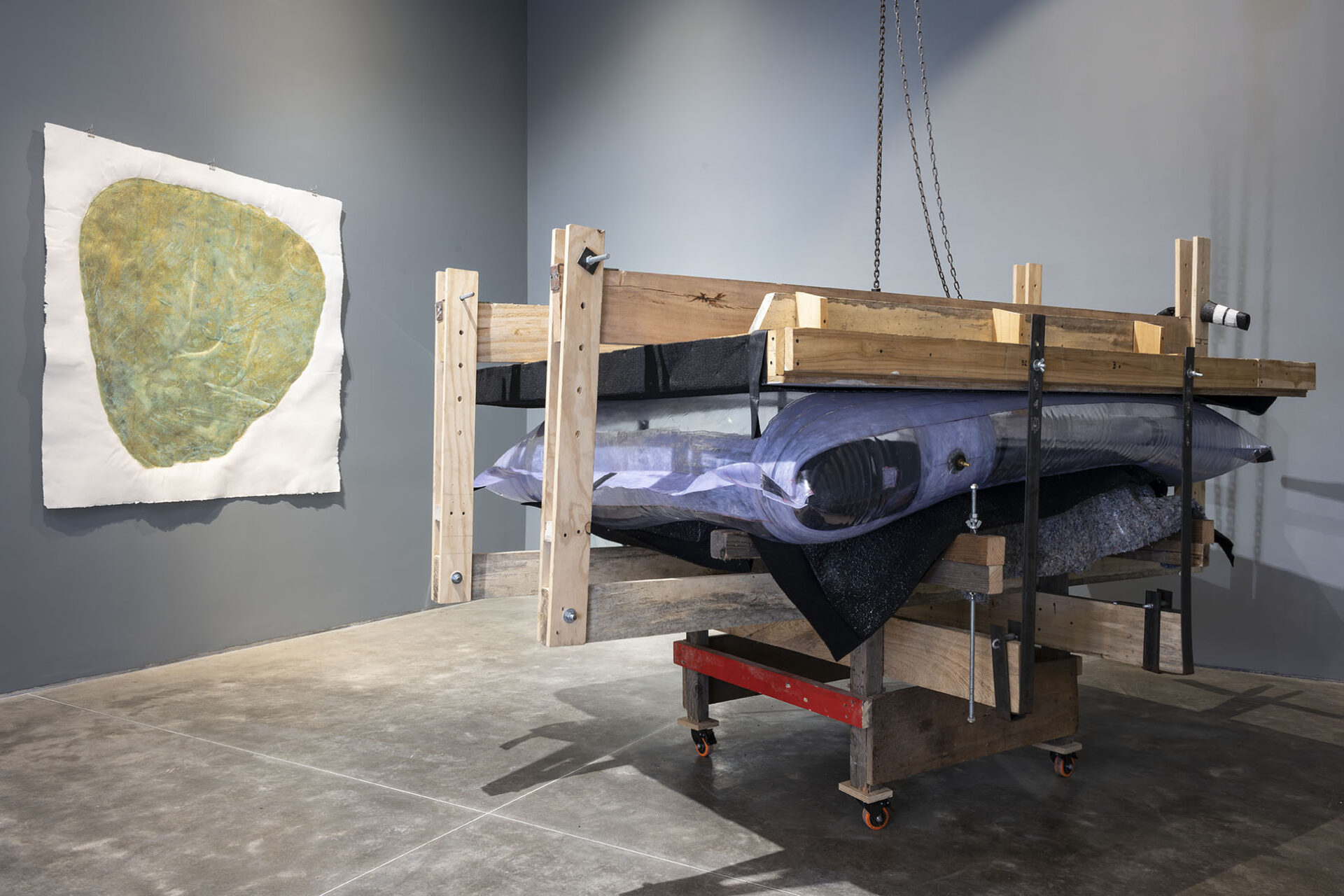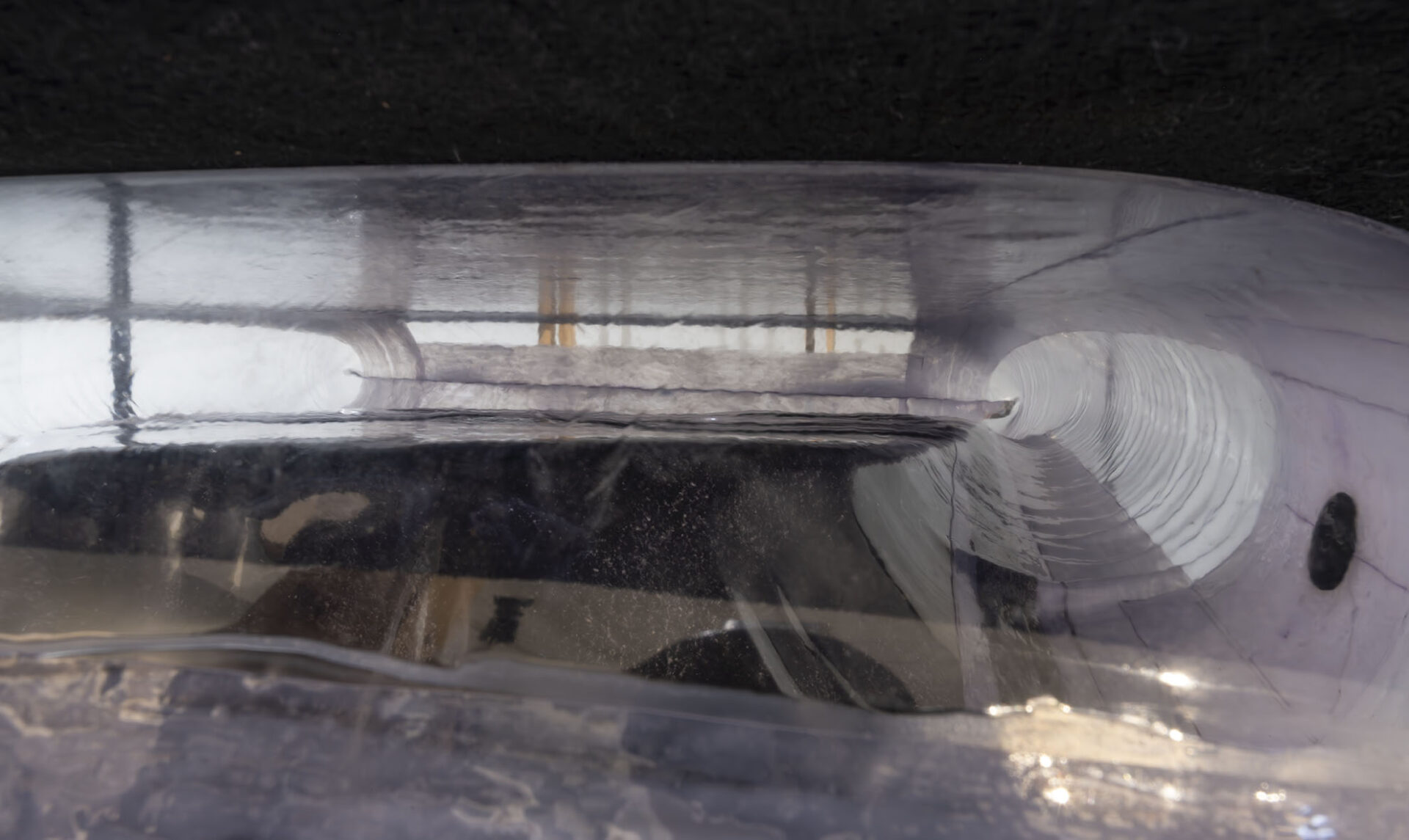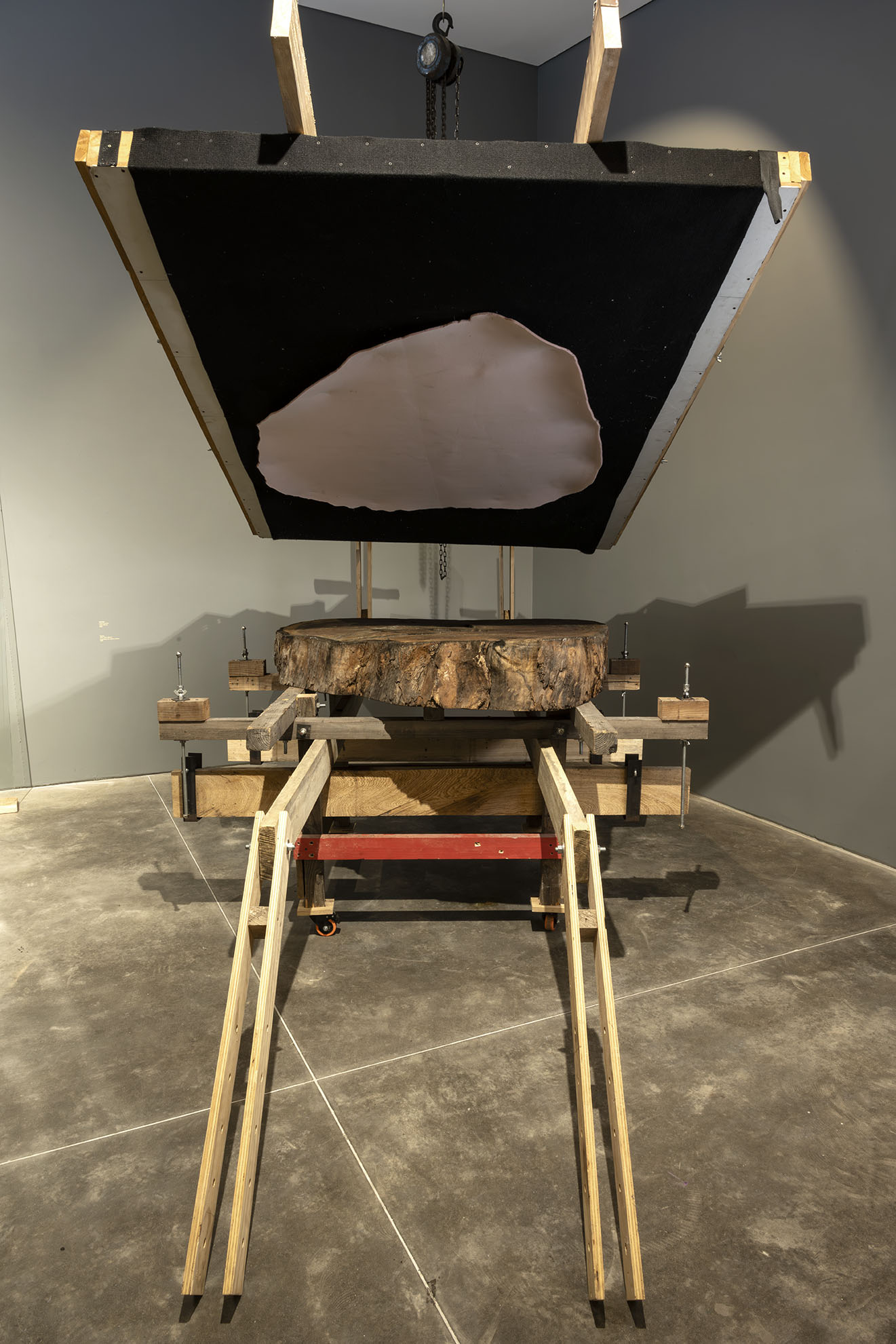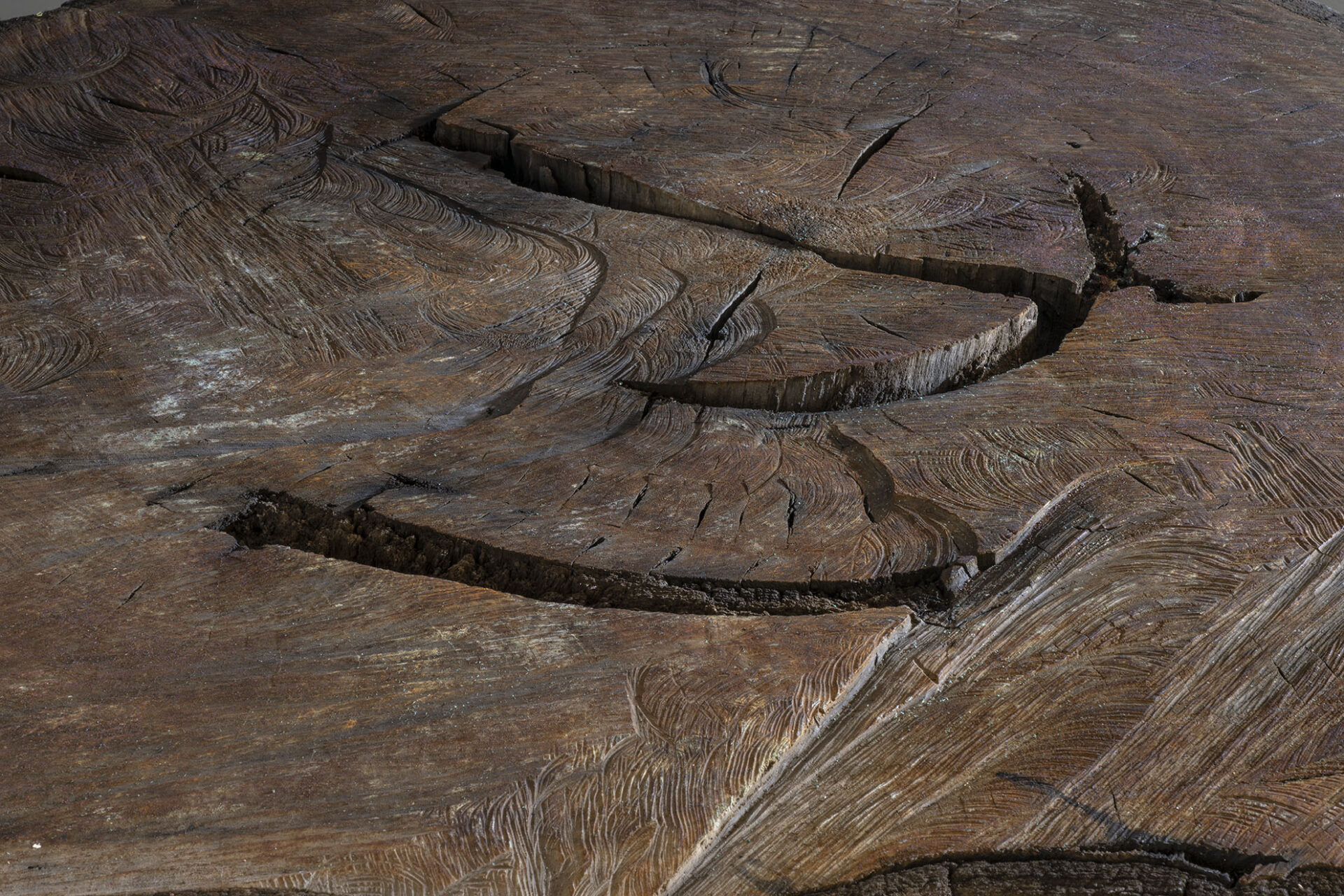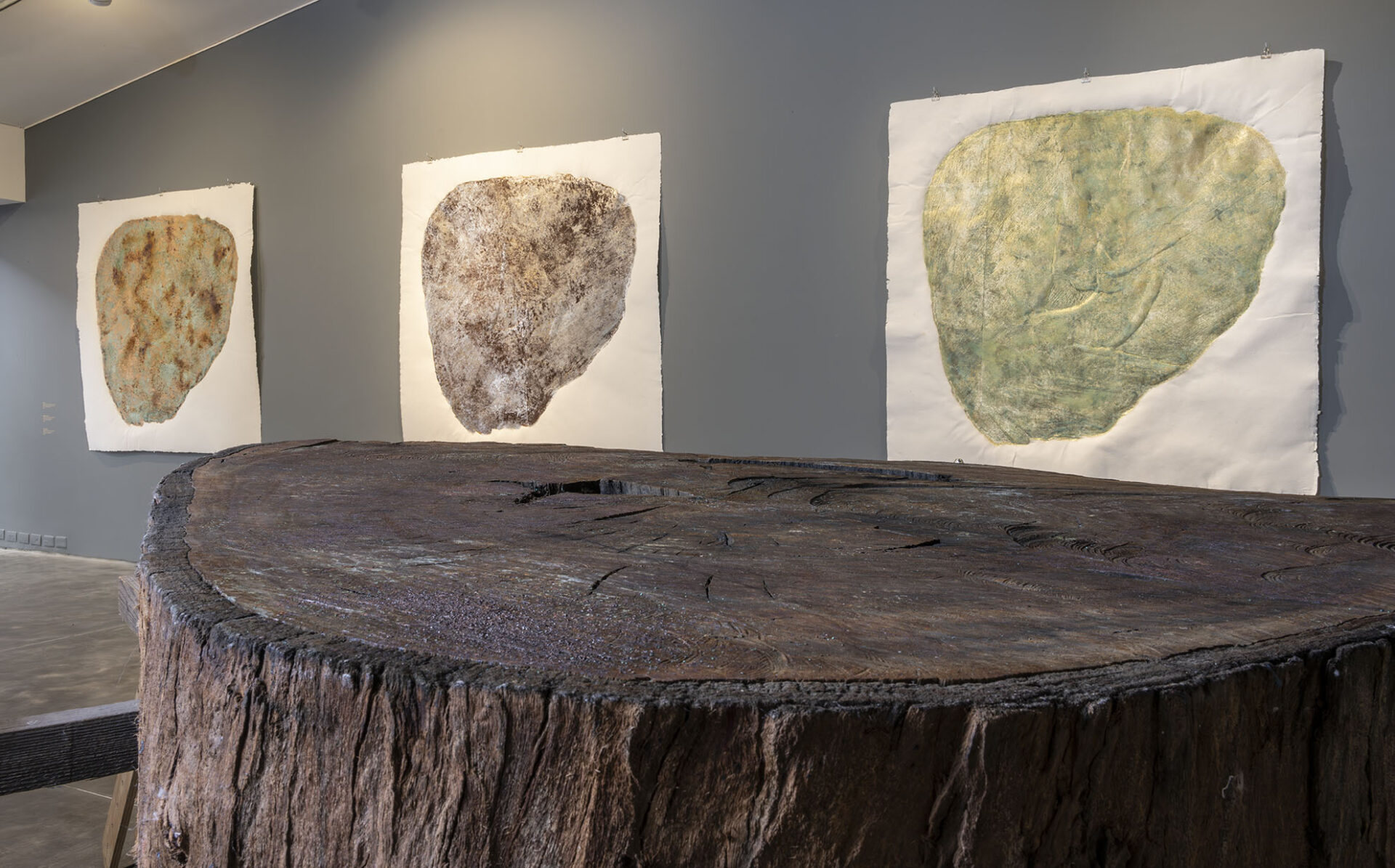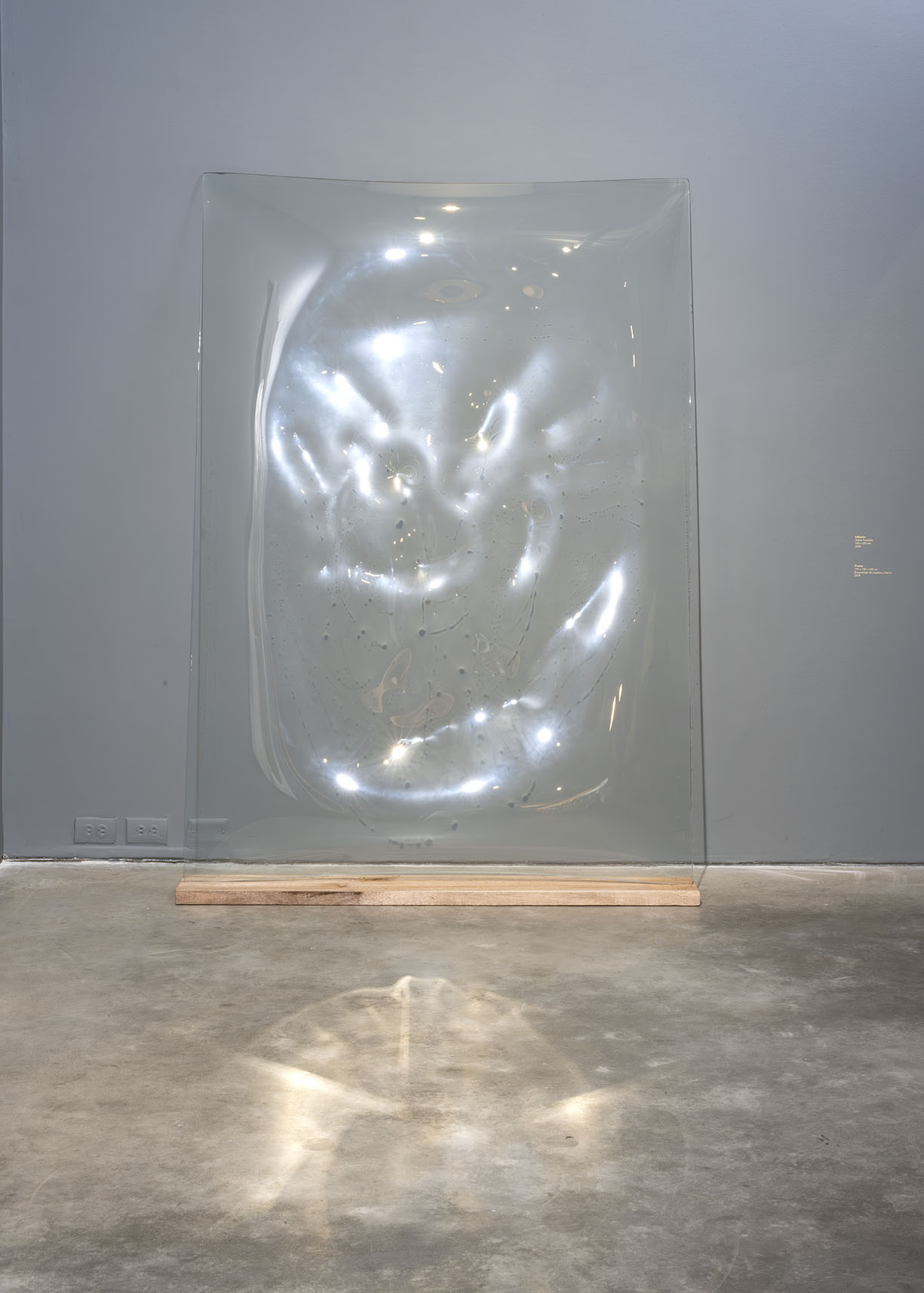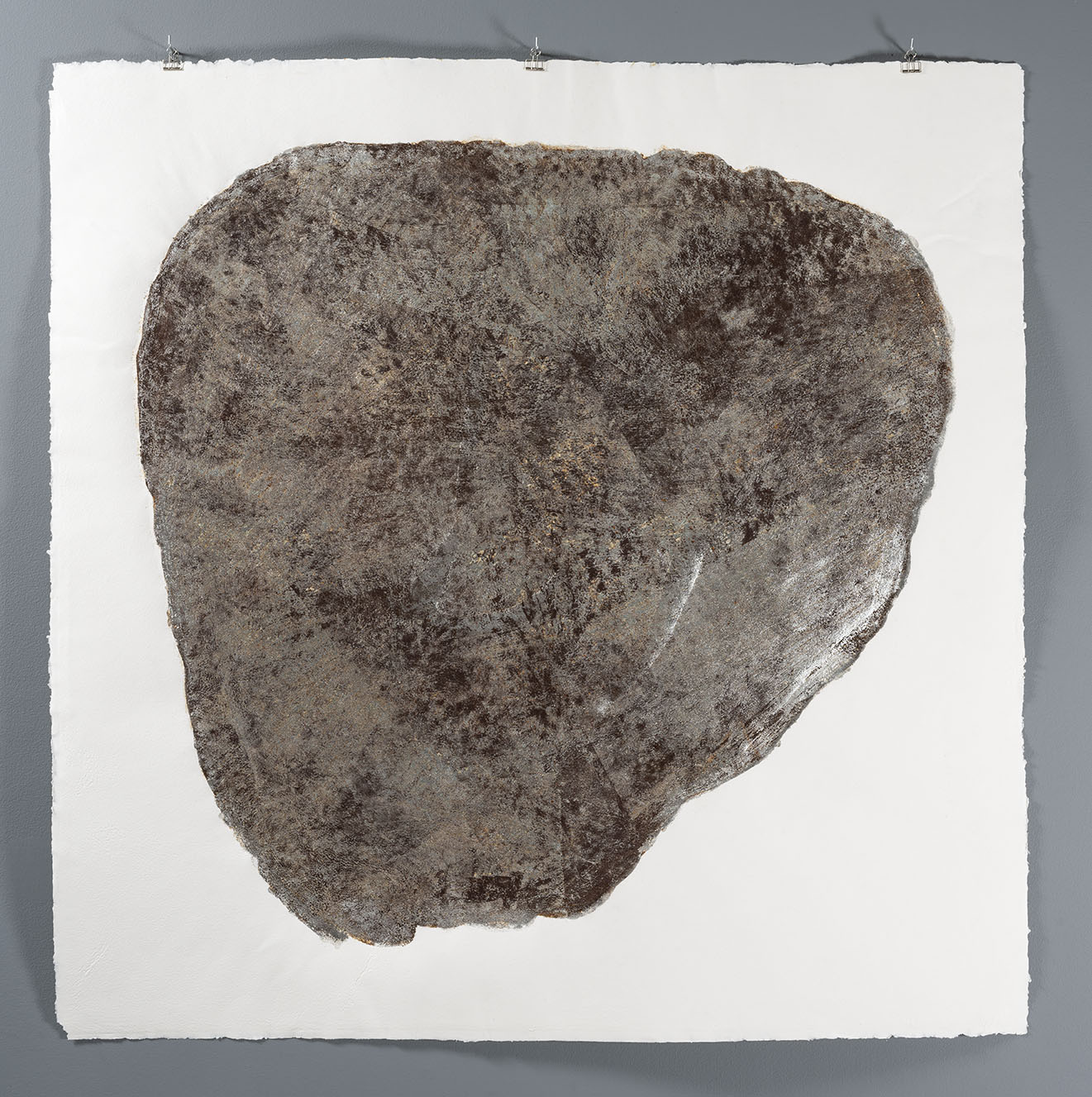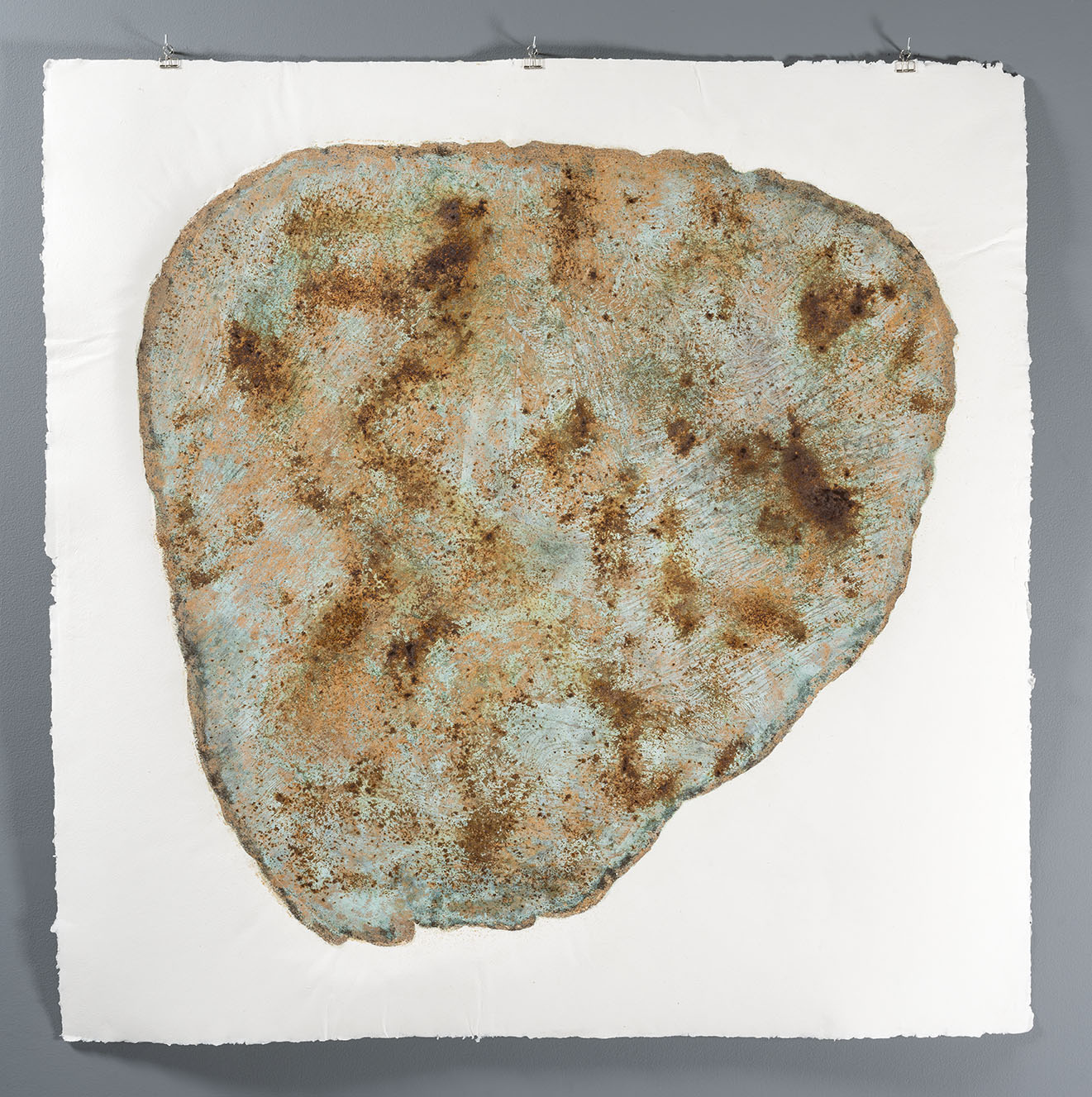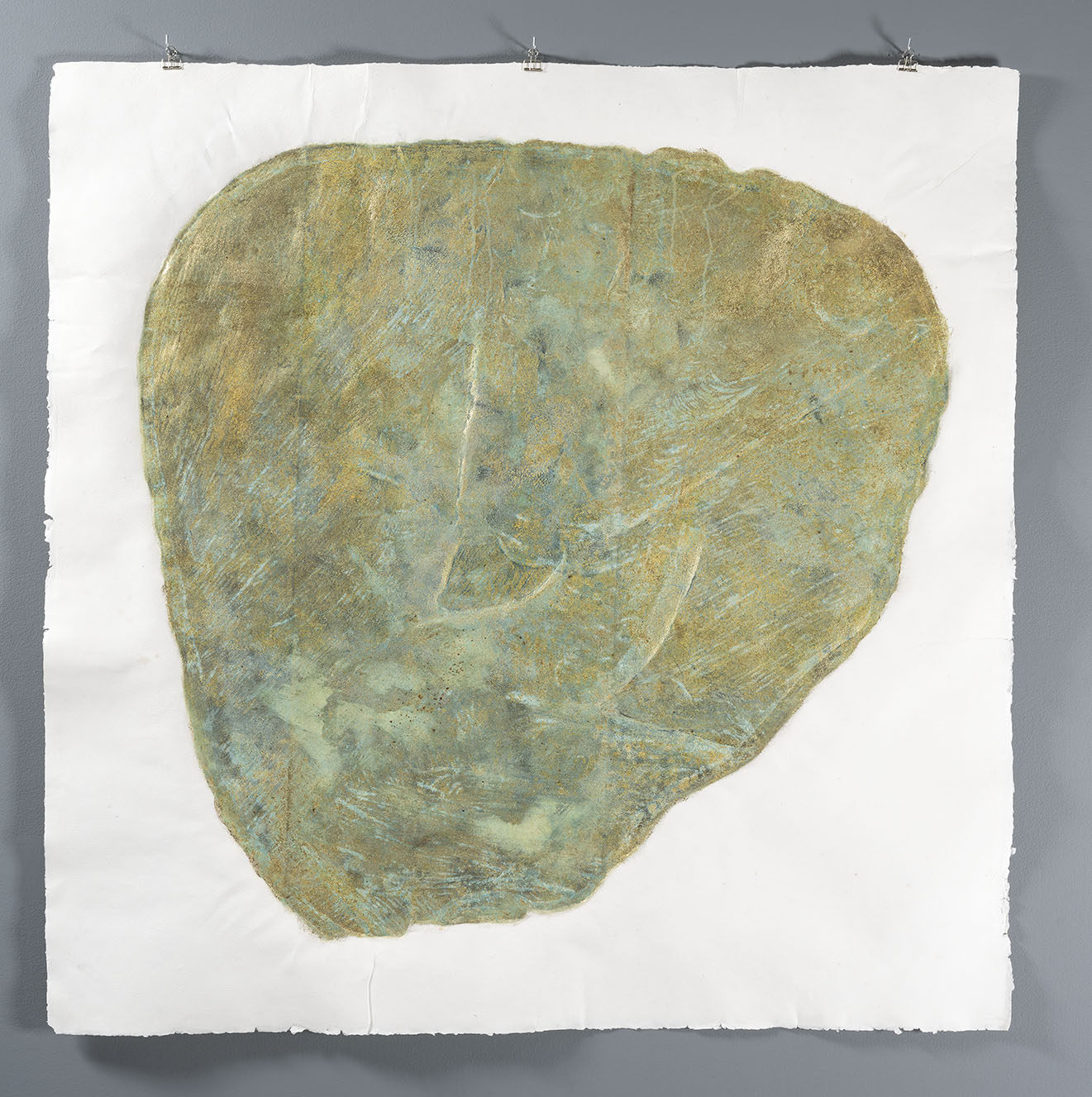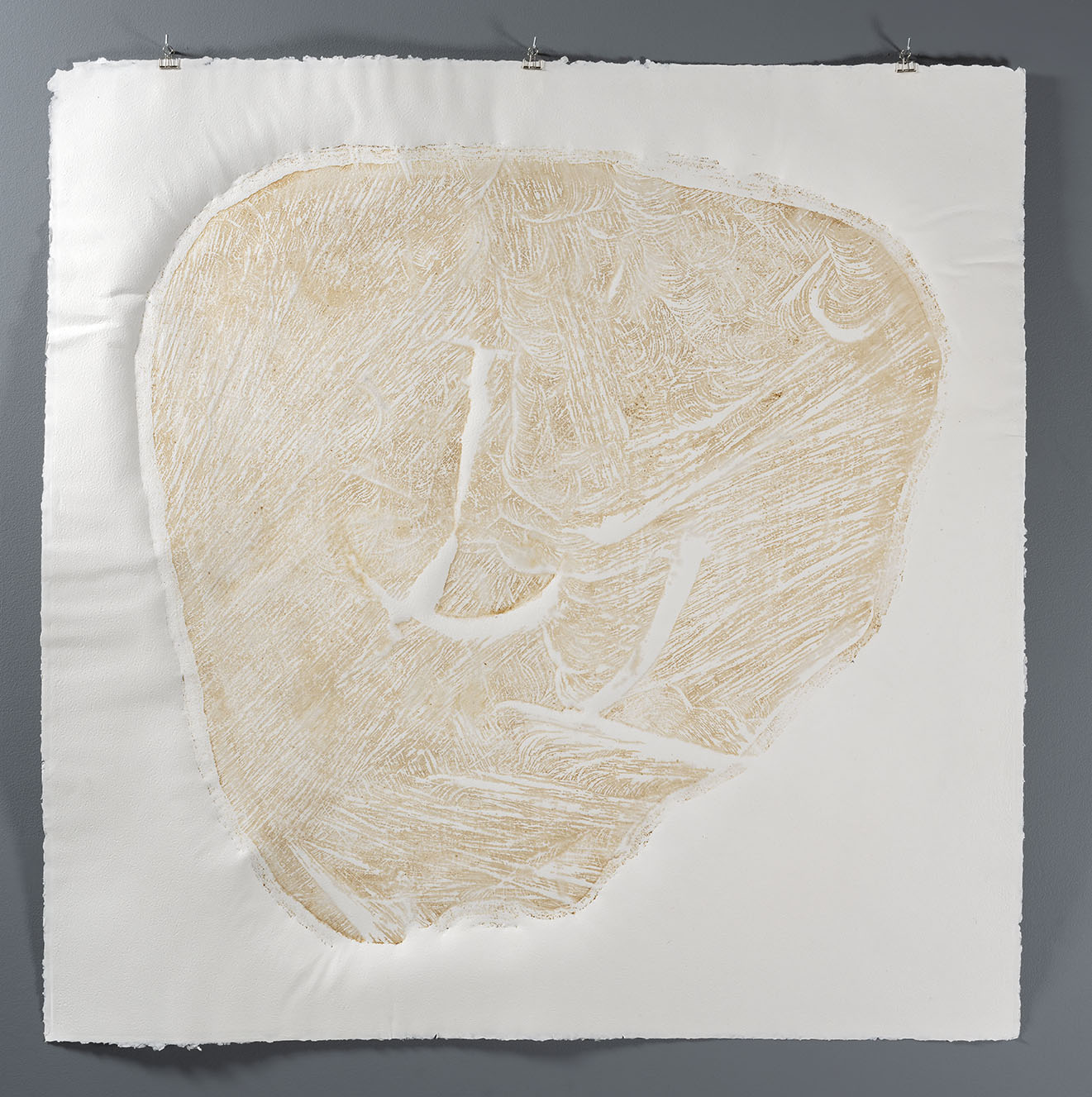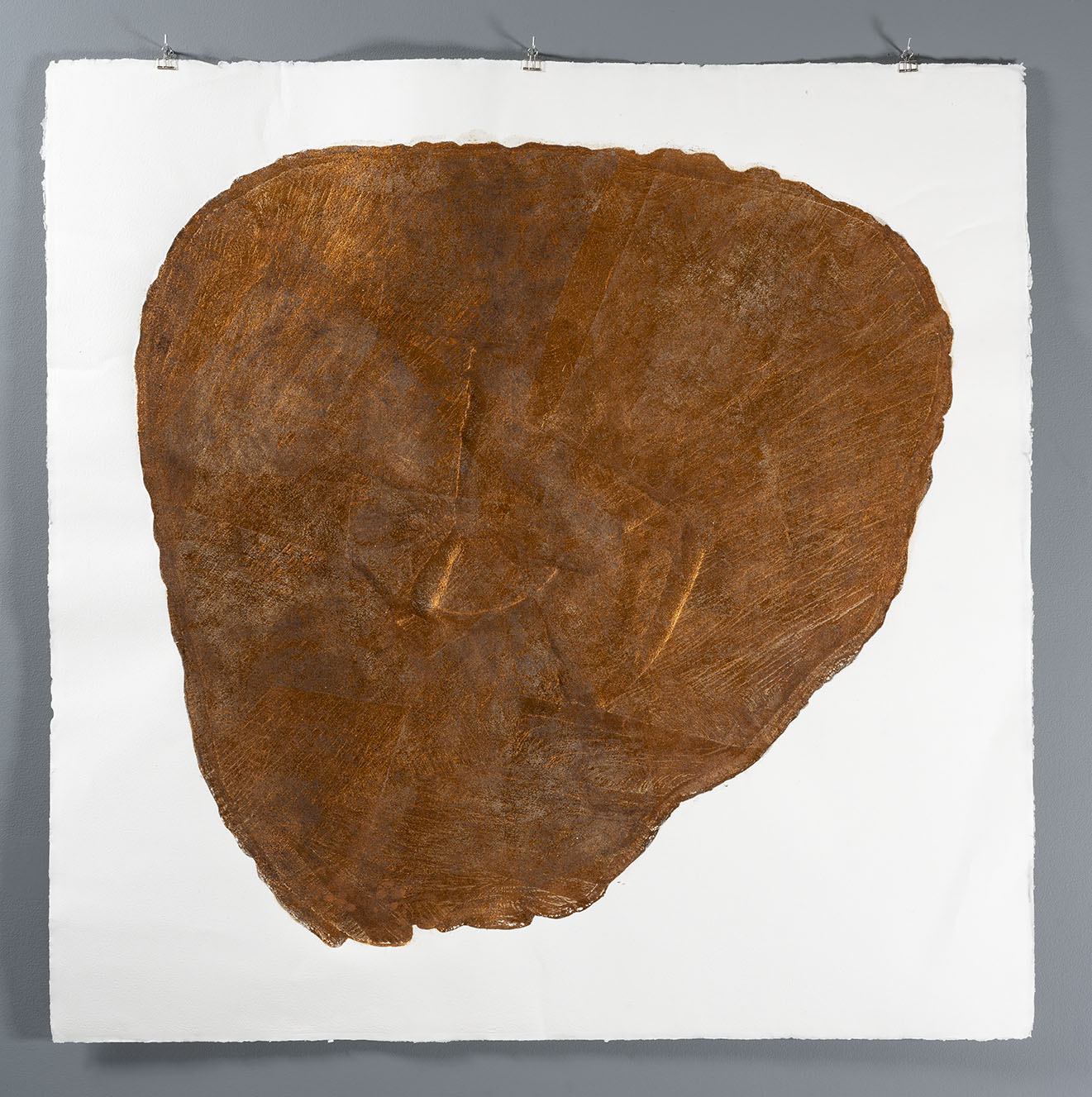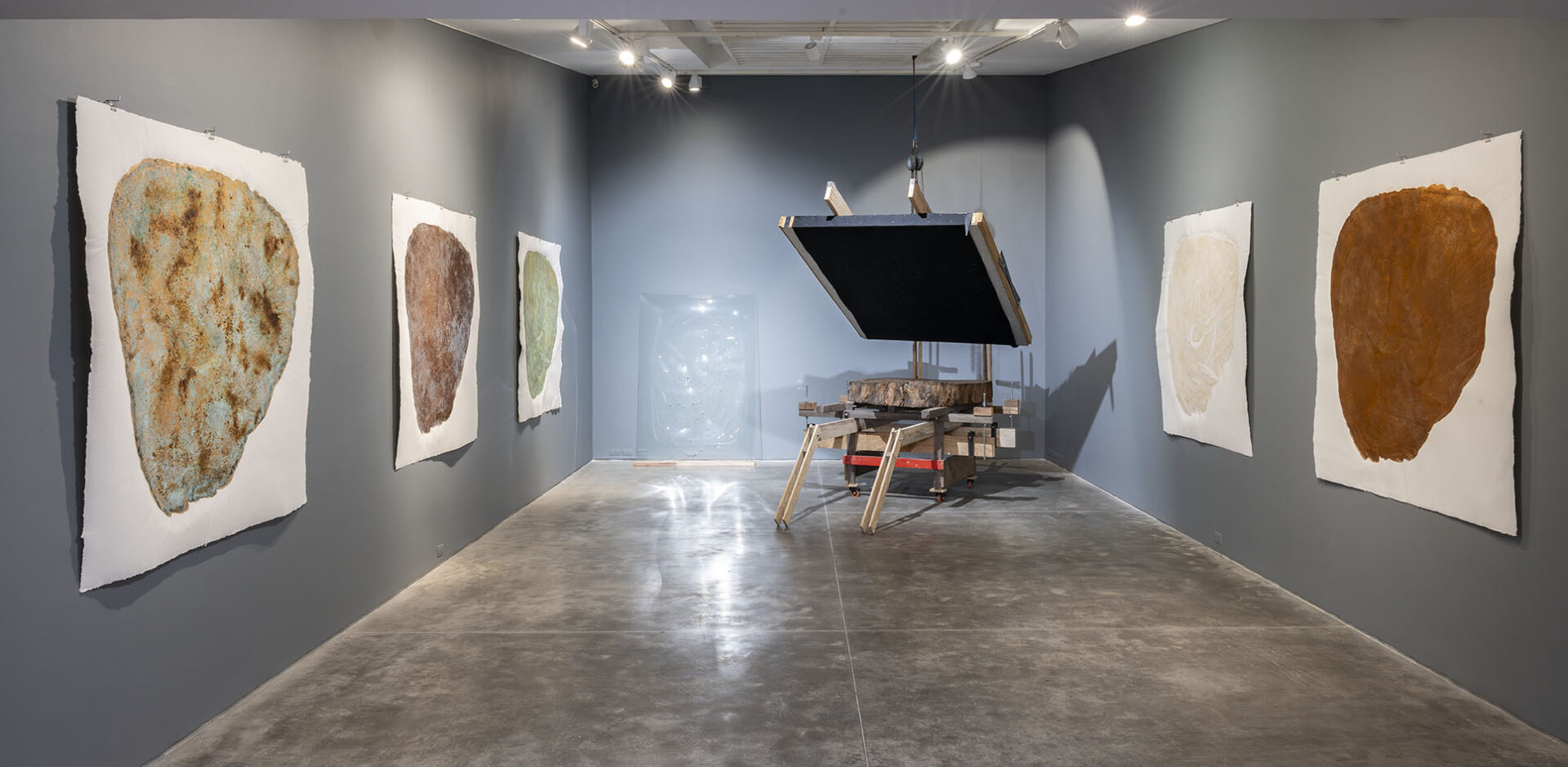
La Reserva
La Reserva. 2024
ES
La reserva recoge un proceso de exploración del artista Miler Lagos que resultó de haber recibido a manera de regalo un trozo del tronco de un árbol centenario que fue talado en el barrio Rosales de Bogotá. El muñón muestra el claro paso de la sierra en las cicatrices que lo surcan y a la vez lo llenan de texturas ajenas a las vetas naturales de la madera. El proceso empieza, entonces, gracias a un diálogo entre Lagos y los vestigios del árbol en el que se revelan los matices que resultaron de la interacción de la herramienta metálica y la madera cortada.
Usando un papel de gran formato especialmente fabricado por Luis Ángel Parra y gracias a una importante gestión de PLART, Lagos emprende una investigación sobre las huellas del metal en la madera y llega a la creación de xilografías en las que la madera no es tallada más allá de los rastros de la sierra. Para lograrlas, construye una prensa de grabado de grandes di-mensiones: suficientes para alojar al poderoso tronco y al fino papel. Como material para dejar la impronta, Lagos experimenta con distintos metales, haciendo eco al material de la sierra con la que se taló el árbol. El resultado es una constelación de grabados, todos piezas únicas, lograda gracias al paso del oro, del bronce y de otros metales que ya no mutilan al árbol sino que rinden homenaje a la edad de sus vetas y plasman en el papel las cicatrices de la tala.
Al haber virado a una economía digital, perdimos la noción de que cada cien pesos estaban respaldados por un peso de oro, guardado celosamente en las reservas internacionales que custodia el Banco de Inglaterra. Ahora bien: cada día somos más conscientes de que la riqueza de los países ha dejado de medirse bajo los mismos parámetros de hace diez o veinte o treinta años y ahora los países más biodiversos empiezan a volverse más atractivos en una economía global que ya no puede ignorar los efectos del cambio climático. Desde esta óptica, las reservas naturales de las que gozamos se constituyen como las verdaderas reservas internacionales. Son reservas inamovibles, imposibles de delegar en su custodia a otro país. Son, no obstante, reservas frágiles y delicadas que dependen de sutiles balances entre especies, de pequeñas variaciones en las aguas y los vientos, del largo y lento paso del tiempo. Dependen, sobre todo, de nuestra contemplación, veneración y respeto.
Miler Lagos logra con esta exposición presentarnos un papel moneda que surge de la remembranza del paso de la sierra metálica por el cuerpo del árbol, que se ubica a medio camino entre el grabado y la instalación y que se constituye como una colección numismática que mira al futuro a la vez que se ansía en el tiempo milenario de la naturaleza.
Paula Silva
EN
The Reserve gathers an exploration process by artist Miler Lagos that began when he received, as a gift, a fragment of the trunk of a centenary tree that had been felled in the Rosales neighborhood of Bogotá. The stump clearly bears the marks of the saw in the scars that cut across it, filling it with textures foreign to the natural veins of the wood. The process starts, then, with a dialogue between Lagos and the vestiges of the tree, revealing the nuances born from the interaction between the metal tool and the cut wood.
Using a large-format paper specially crafted by Luis Ángel Parra and thanks to the important support of PLART, Lagos embarks on an investigation of the traces of metal in wood, leading to the creation of woodcuts in which the wood is not carved beyond the saw’s marks. To achieve this, he builds a large-scale printing press, big enough to hold both the powerful trunk and the delicate paper. As material for leaving the imprint, Lagos experiments with different metals, echoing the material of the saw that felled the tree. The result is a constellation of prints, each one unique, created through the passage of gold, bronze, and other metals that are not longer mutilating the tree but paying homage to the age of its veins and inscribing the scars of its felling onto paper.
With the shift to a digital economy, we lost the notion that every hundred pesos were once backed by a peso in gold, safeguarded in the international reserves held by the Bank of England. Yet today, we are increasingly aware that the wealth of nations is no longer measured by the same parameters of ten, twenty, or thirty years ago. The most biodiverse countries are becoming ever more attractive in a global economy that can no longer ignore the effects of climate change. From this perspective, the natural reserves we enjoy are revealed as the true international reserves. They are immovable reserves, impossible to entrust to the custody of another country. They are, however, fragile and delicate, dependent on subtle balances between species, on slight variations in waters and winds, on the long and slow passage of time. Above all, they depend on our contemplation, veneration, and respect.
With this exhibition, Miler Lagos succeeds in presenting us with a form of currency born from the remembrance of the saw’s passage through the body of the tree, an artwork situated halfway between printmaking and installation, and conceived as a numismatic collection that looks toward the future while anchoring itself in the millenary time of nature.
Paula Silva
